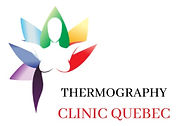
Breast Scan
Thermography has been studied as a potential tool for breast cancer detection, benign tumours, mastitis, and fibrocystic breast disease.
Here are some potential benefits of thermography in breast cancer:
Thermography is a radiation-free method of monitoring breast health that is based on research and clinical experience.
Non-invasive: Thermography does not involve any compression or radiation exposure, making it a painless and safe option for breast cancer screening.
Early detection: Thermography can detect changes in breast tissue temperature patterns that may be indicative of cancer growth earlier than mammography, potentially allowing for earlier intervention and improved outcomes.
Risk assessment: Thermography may be used as a risk assessment tool to help identify individuals who may be at higher risk for breast cancer and could benefit from further testing or increased surveillance.
Monitoring treatment: Thermography may be used to monitor response to treatment, as changes in temperature patterns may indicate a response to therapy or disease progression.
EARLY DETECTION REALLY DOES SAVE LIVES
Given that one in every eight women may get breast cancer, we must employ all tools feasible to diagnose tumours while there is the best chance of survival.
Breast cancers are particularly aggressive in younger women. Unfortunately, there are currently no established protocols for the application of imaging techniques.
With thermography’s expanded role as a risk assessment technology, infrared imaging brings a great addition to early cancer detection protocol.
Early detection of breast cancer must be a priority.
The earlier a disease is diagnosed, the more likely it can be cured or managed successfully. Managing a disease, particularly during its progression, may reduce its impact on your life, and prevent or delay serious complications.

Be Proactive With Your Health


WHAT MAKES INFRARED IMAGING SO UNIQUE
While mammography, ultrasound, MRI, and other types of structural imaging rely on finding the physical tumour, thermography is based on detecting the heat produced by increased blood vessel circulation and metabolic alterations related to the development and proliferation of tumours.
By detecting a variation in normal blood vessel activity, infrared imaging may find thermal signs suggesting a pre-cancerous state of the breast or the presence of an early tumour growth that is not yet detectable through physical examination, mammography, or other structural imaging techniques.
Since both physical and mammographic examination cannot detect all cancers, particularly smaller tumours in younger patients and those with dense breast tissue, women who are on hormone replacement therapy, nursing or have fibrocystic, large, or augmented breasts therefore currently have much interest in finding new ways to improve our abilities in early detection.
However, no single imaging technology can detect all early-stage cancers with 100% accuracy. As a result, thermography, mammography, ultrasound, and MRI cannot be used alone to provide women with true early detection. These are all complementary imaging technologies.
Thermography does not replace any other imaging technology, and no other imaging technology can replace thermal imaging. The tests are mutually beneficial.
When breast thermography and structural imaging are used together, studies show an increase in survival rate.
This allows a woman the opportunity to be proactive to enhance breast health.
By maintaining close monitoring of her breast health with infrared imaging, self-breast exams, clinical examinations, and structural imaging a woman has a much better chance of detecting cancer at its earliest stage and preventing invasive tumour growth.
Early Detection Is Important, But Prevention Is The Key
THERMOGRAPHY AS A RISK ASSESSMENT AND PREVENTION FOR BREAST CANCER
According to studies, an aberrant infrared picture is more relevant than a family history of the illness as the single most significant signal of high risk for developing breast cancer.
With thermography’s expanded role as a risk assessment technology, infrared imaging brings a great addition to early cancer detection protocol.
Every woman is encouraged to get her risk of breast cancer evaluated.
Cancer develops slowly, with one abnormal cell. It typically takes nearly 8 years for that single abnormal cell to replicate to one billion cells, resulting in a detectable lump one centimetre in size. This is the size of a mammogram-visible lump. This is not an early finding. It means that cancer is spreading already. The current screening strategy is insufficient to protect women against breast cancer.
Breast thermography should be included in every woman's routine breast health care. We must do everything possible to provide early detection in order to keep women from having to deal with this dreadful disease.
A survival rate has been demonstrated when thermography is added to a woman's regular health checkup.

Breast Thermography Guidelines
-
Initial infrared scan from age 20
-
20-30 years of age – every 3 year
-
30 years of age and over – every year

